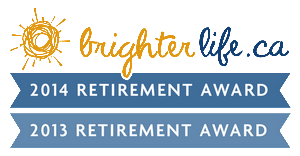There has been a great deal of negative talk about how much Canadians are putting away for retirement. Many pundits thought that the lack of savings would cause major crises in the near future as more and more Boomers retire. However, the good news is that almost two-thirds of Canadian households are saving for retirement, census data show, despite a national household savings rate that fell to 4.6 percent in the second quarter of this year.
Of 14 million households, 65.2 percent made a contribution to either a registered pension plan, an RRSP or a tax-free savings account (TFSA) in 2015, Statistics Canada said in September.
Of 14 million households, 65.2 percent made a contribution to either a registered pension plan, an RRSP or a tax-free savings account (TFSA) in 2015, Statistics Canada said in September.
This is good news for the Canadian Economy and for those who will be retiring. I find it interesting that each generation has similar saving programs, except for the 15 to 24-year-olds who are not putting as much into Registered Retirement Savings or Retirement Pension Plans (work-based pensions) or Tax-Free Savings Account. This group is just starting on their work journey and have other priorities such as saving for a home.
Some may ask what about the 35% that are not saving, and that is a legitimate question. However, many of that group are putting money, through work, into the Canada Pension Plan, which is not accounted for in the above statistics.
There are those Canadians who cannot work or who chose to work at home and do not pay into the Canada Pension Plan, and that may become a problem unless we start to look at the Old Age Security and the Guaranteed Income Supplement that was designed to help those who had no other source of income when they retired.
As long as Canadians continue to save for retirement through the programs available to them, we will not face a crisis when all the boomers retire.
Research compiled by actuary Malcolm Hamilton of the C.D. Howe Institute suggests that the rate of retirement saving for employed people has actually almost doubled in recent decades.
Hamilton's data-crunching exercise — which sought to correct for household saving's shortcomings — showed a surge between 1990 and 2012 in contributions to retirement savings plans, even as household saving dropped sharply. Over that 22-year period, contributions went from 7.7 percent of earnings to 14.1 percent.


